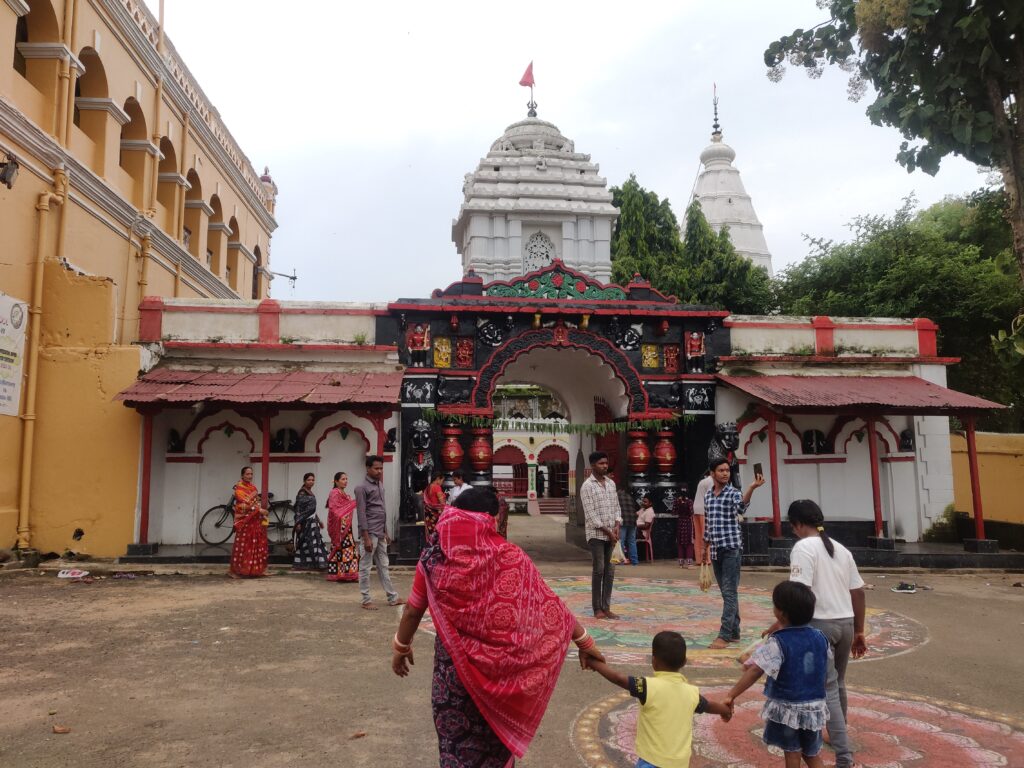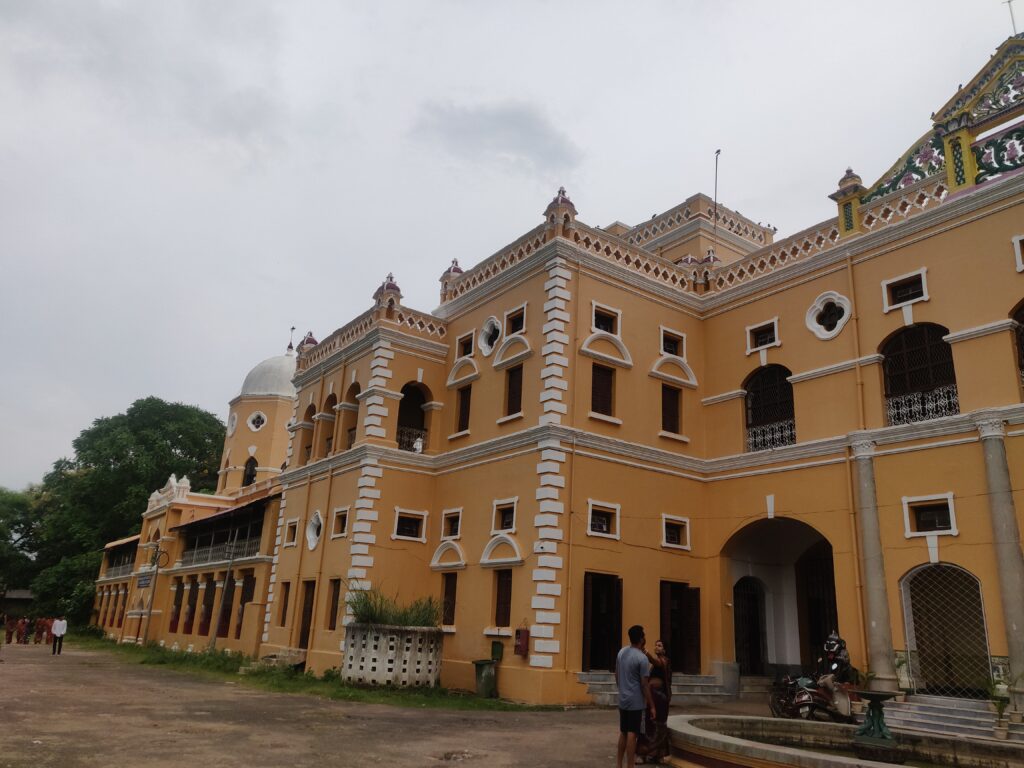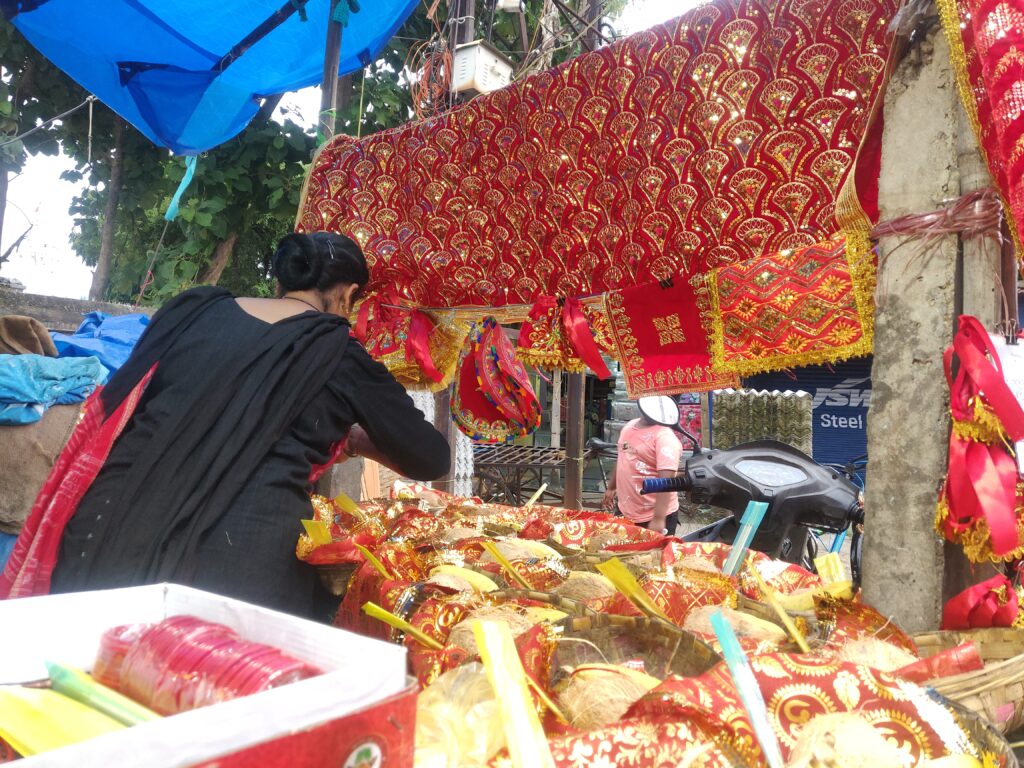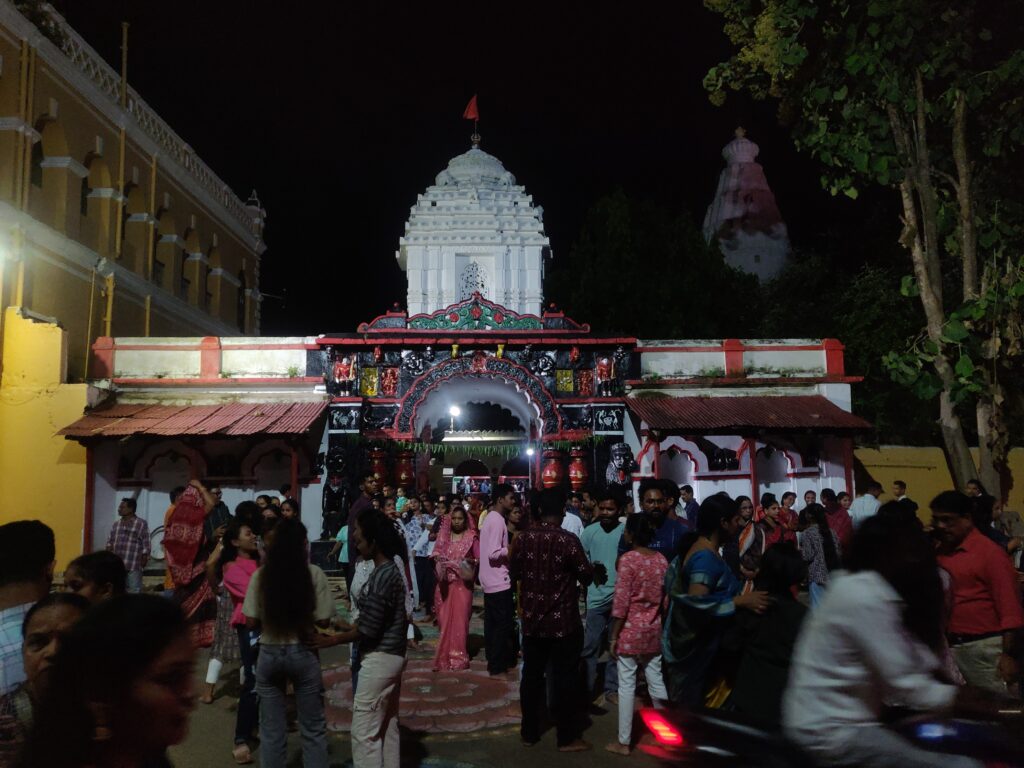Nuakhai, a harvest festival celebrated predominantly in western Odisha and parts of Chattisgarh, marks the welcoming of the new rice crop. The term “Nuakhai” comes from “Nua” meaning new, and “Khai” meaning food. This symbolises the first offering of the season’s harvest to deities. Each region of Odhisha has its own presiding deity, and the rituals of Nuakhai vary accordingly. The reverence for local deities has evolved over centuries, reflecting the intricate relationship between communities and their environment.
In Kalahandi district, where I am currently working as an India Fellow, Maa Manikeshwari is widely worshipped. One can find the name on virtually anything – a hospital, a bus, a restaurant, even a general store. On this auspicious day, the temple becomes the centre of community celebration. Dr. Chitrasen Pasayat’s article, Nuakhai: An Epitome Of The Great Tradition Of India (Orissa Review, 2007), highlights how festivals like Nuakhai bind communities across regions, allowing a blend of the ‘Great Tradition’ of formal religion with local folk traditions.
Maa Manikeshwari Temple
I found a Maa Manikeshwari Temple just a short walk away from where I was staying. And so, I decided to take an evening stroll to witness the festivities firsthand.


The Maa Manikeshwari Temple is located within the premises of the Kalahandi Palace, a historic structure that once housed the royal family of Kalahandi. The palace, built in the late 19th century during the reign of Maharaja Brajamohan Deo, reflects a blend of indigenous and colonial architectural styles. I arrived at around 4:30pm, just as the early evening festivities were beginning. Families and friends were starting to gather, wishing each other “Nuakhai Juhar“. Women were dressed in traditional Sambalpuri prints. Their bright attire complemented the intricate rangoli designs on the floor.
After submitting my phone at the counter near the front gate, since photography was prohibited inside, I stepped into the temple grounds. The atmosphere was serene, with priests preparing for the evening prayers. A massive tree caught my eye. Its trunk adorned with red cloth, offered as a sign of devotion to the goddess.

I made my way to the inner sanctum and stood in front of the statue of Maa Manikeshwari. A priest approached, offering me a few flower petals and leaves as prasad (picture on left). He gently placed his hand on my head to give blessings. He then asked me something in Odia, but I couldn’t understand. Politely, I asked if he could speak in Hindi, to which he obliged with a smile.
Blessings
He inquired if I ate rice, and I responded. “Of course.” His next question took me by surprise. He asked why I hadn’t attended the morning ceremony when the rice offering took place. I explained that I was new to the area and hadn’t known about the ritual. He told me to stay back till 6:30pm and not miss the evening prayers. The conversation then shifted to my work and life, as he curiously asked about my background. After a few more words of blessings, most of which I couldn’t fully grasp, he concluded with a blessing that was unmistakably clear: he wished that I find a good husband soon. I smiled, grateful for the warmth and sincerity behind his words.
Faiths Within Faith
Since the evening prayers were still some time away, I decided to step outside again. As I exited the temple, something unusual caught my attention. There were red cloth offerings tied around a nearby streetlight pole, similar to the ones I had seen on the tree trunk inside. The pole stood beside a small concrete platform where people were making offerings to a stone statue. A stand nearby held used diyas, likely remnants from the previous night’s rituals.
Curious as to why these offerings were being made outside the temple, I approached two young girls standing nearby and asked about it. They explained that devotees were no longer allowed to make offerings inside the main temple or take photographs. So the offerings were made outside the front gate, before entering for Maa Manikeshwari’s darshan. When I asked why this change had been implemented, they shrugged—neither of them knew the reason behind it.
This blend of devotion and adaptation intrigued me. Even with new restrictions in place, people continued their traditions in whatever way they could, finding a new space for old practices.
Since I had some time before the evening prayers would start, I stepped outside the temple in search of something to eat. The area was lined with small stalls selling a variety of offerings for the temple rituals. I stopped at a stall run by Tejaswi didi and bought a banana. As she handed it to me, we struck up a conversation.

Raja Ki Maa
“didi, nariyal mandir ke bahar kyun chadha rahe hain?”
“wo raja jaisa bolta hai waisa karna hota hai”
“kaun raja?”
“raja ki maa hai ye”
“raja ki maa? kaun hai raja ki maa”
“ye raja ka ghar hai na, aur ye raja ki maa hain, raja jaisa bole waisa karte hain”
“accha! mehel ka raja? maa manikeshwari unki maa hain?”
“Haan, wo saare Raja ki Maa hai”
After chatting with Tejaswi didi, I wandered through the bustling market outside the temple. I spotted a Ghumra dance troupe performing in the street. Their synchronised movements and the powerful beat of their instruments captivated everyone around.
Evening Prayers Of Maa Manikeshwari
Soon, it was time for the evening prayers, so I returned to the temple. The air was still as everyone stood in reverence. The sound of local instruments harmonised perfectly with the deep, resonant beats of the Nagada drums. The rhythmic music carried a sense of practiced devotion, drawing the entire crowd into a shared moment of spiritual focus.


By now, the sun had set. I stepped outside. The contrast between the orderly prayers inside and the scene outside was striking. People moved around in their own time, placing their offerings with no particular sequence, creating a gentle mess that somehow fit perfectly against the backdrop of flickering diyas. The offerings were scattered beneath the streetlight pole. It was a scene of devotion in its own, unstructured way, the messiness making it feel all the more real and human.

As I made my way back, someone stopped me and suggested I attend Maa Manikeshwari’s Chattar Jatra. Held during Dussehra, this grand festival is one of the most significant events for the people of Kalahandi, with a massive procession where the goddess’s symbolic umbrella, or “chattar,” is taken out in a grand ritual. After experiencing Nuakhai, I cannot wait to dive into more of these local festivities and witness the deep cultural connections that thrive in this region.




0 Comments